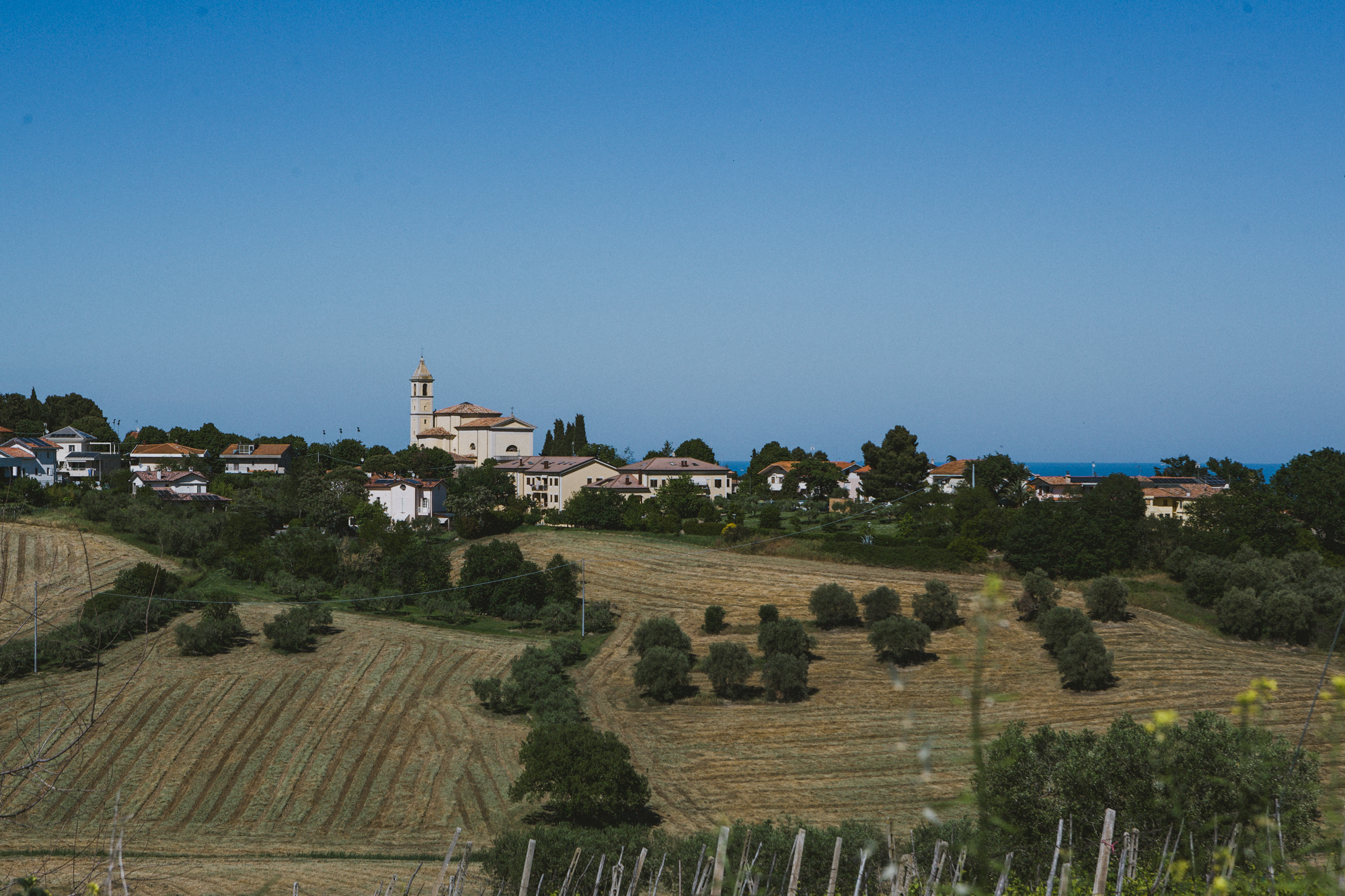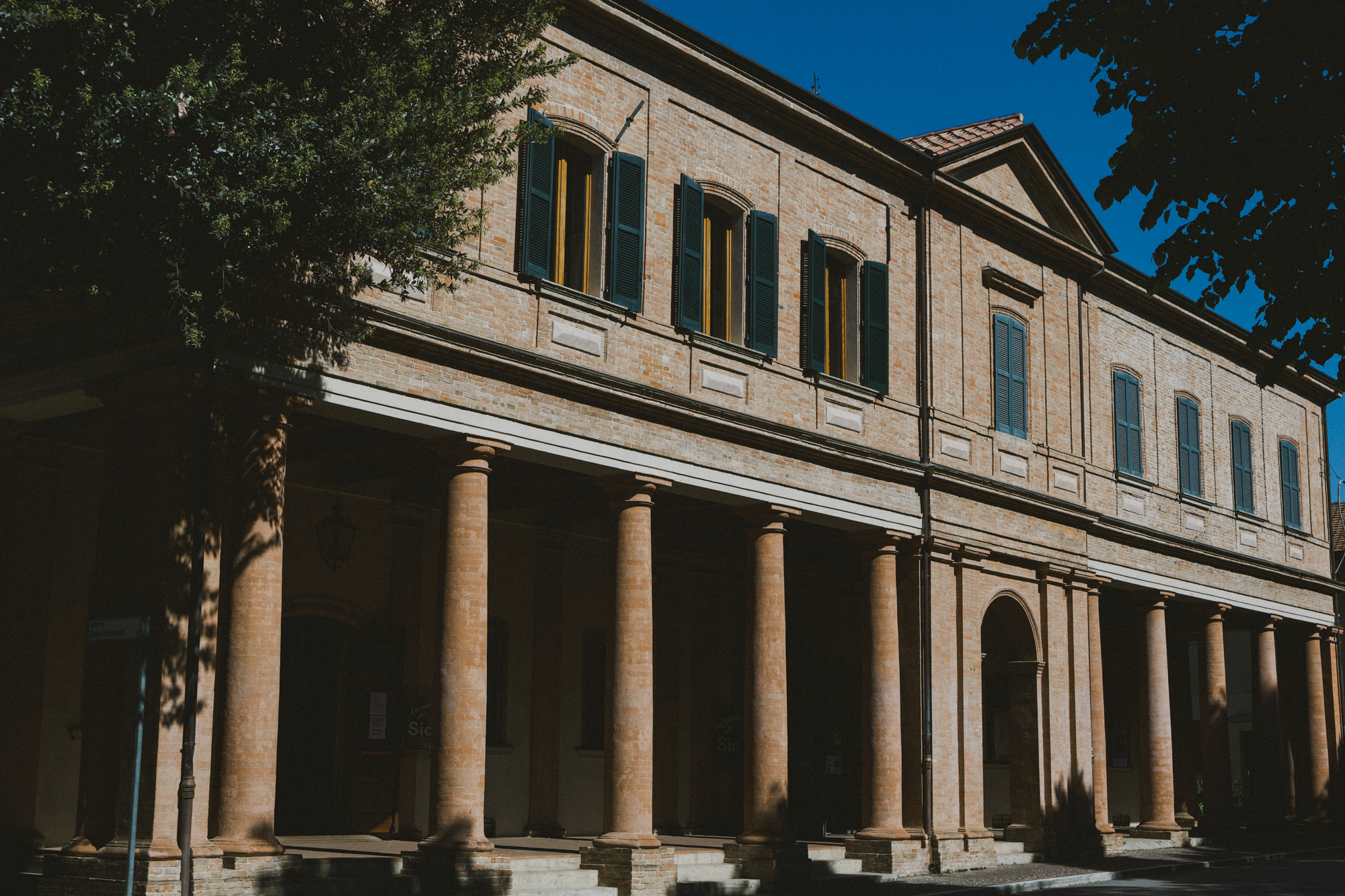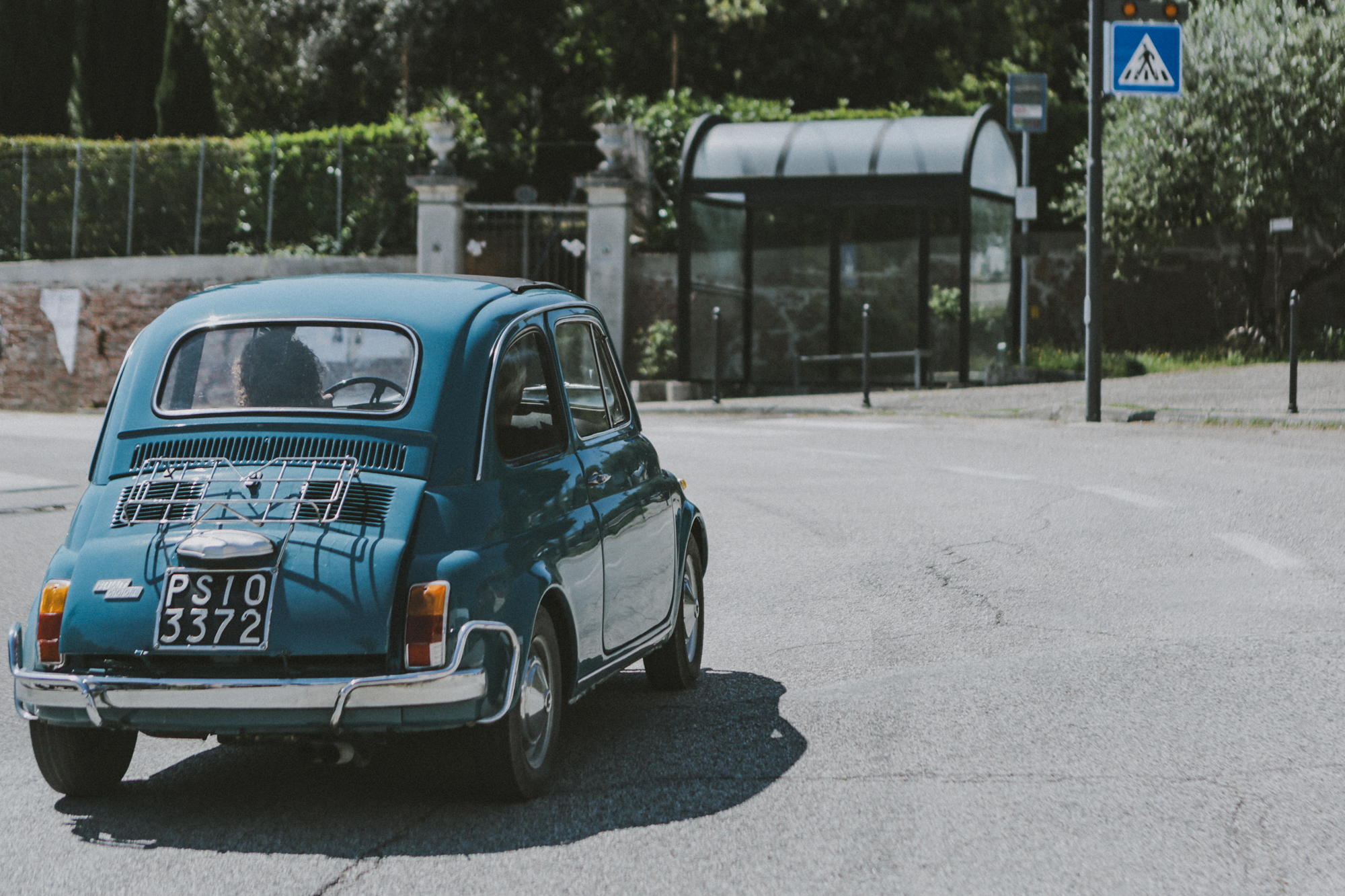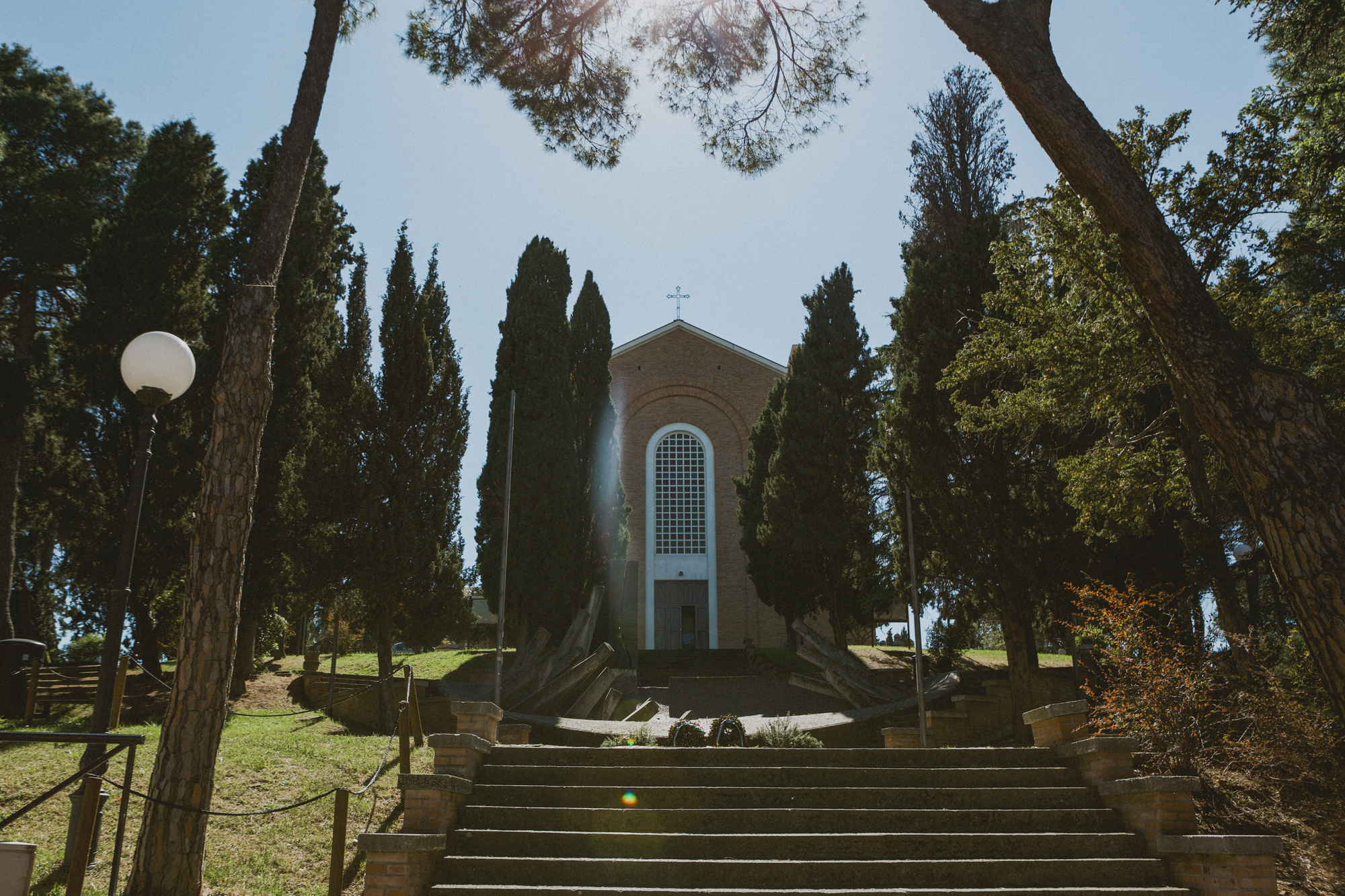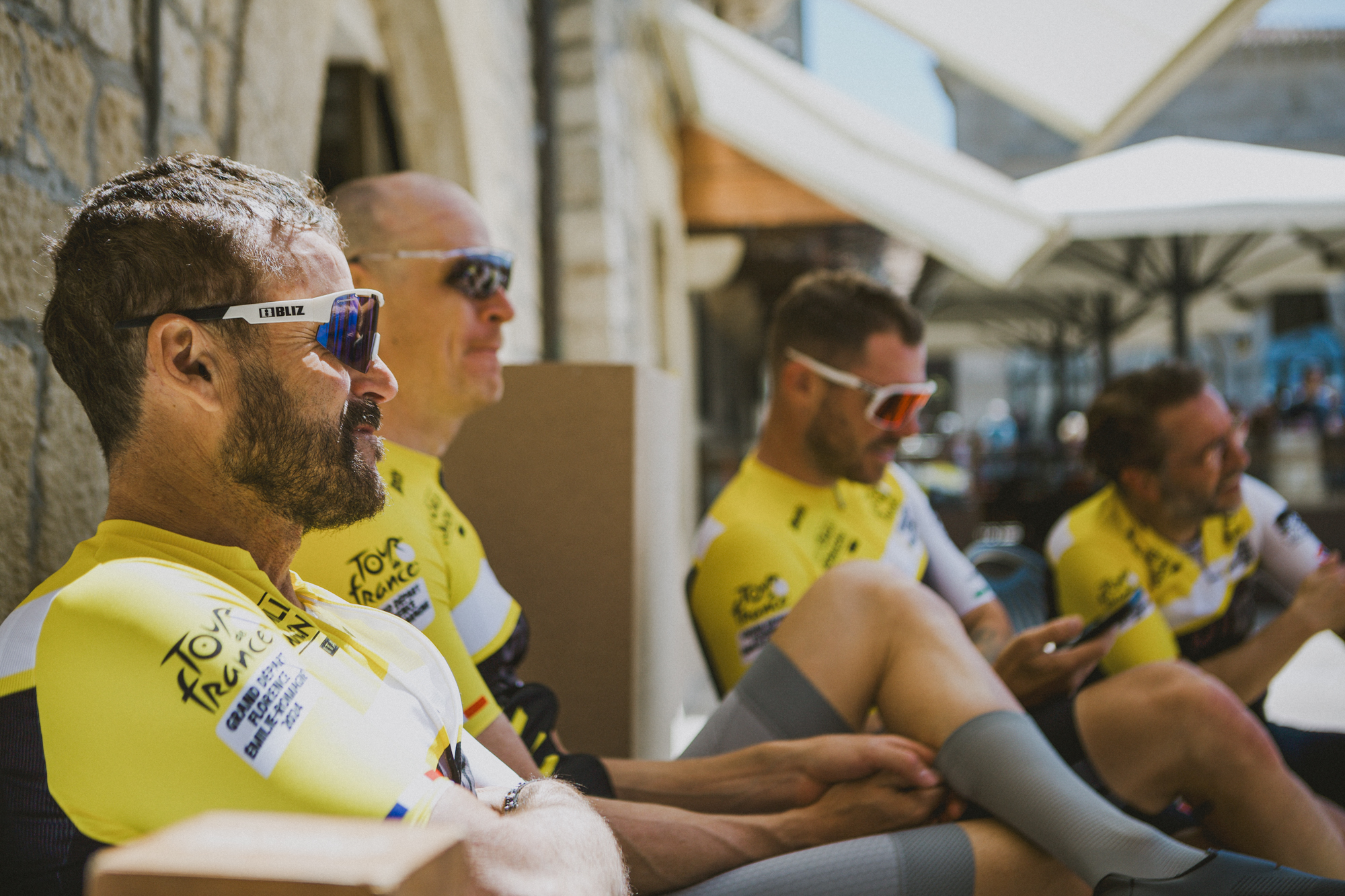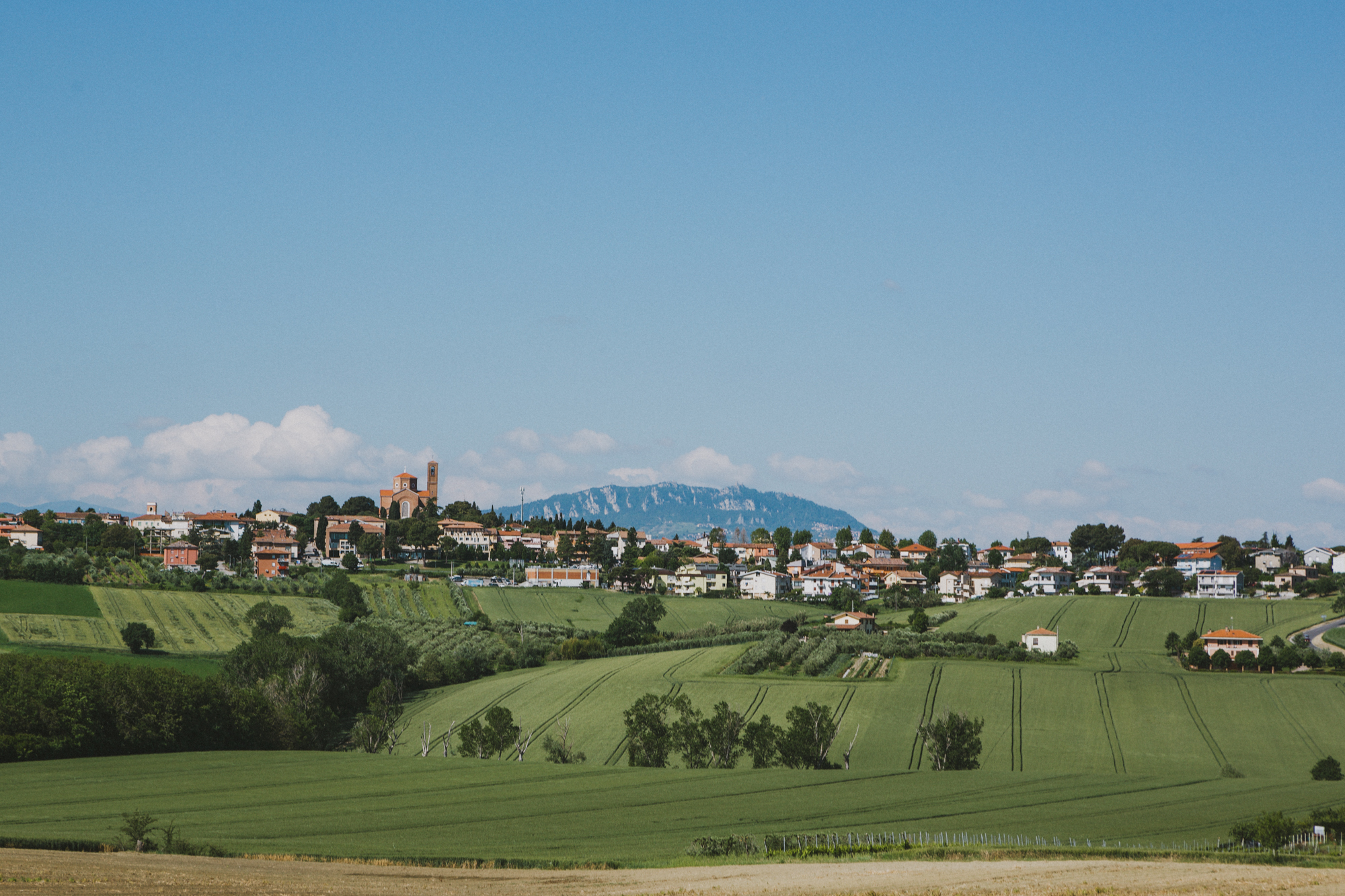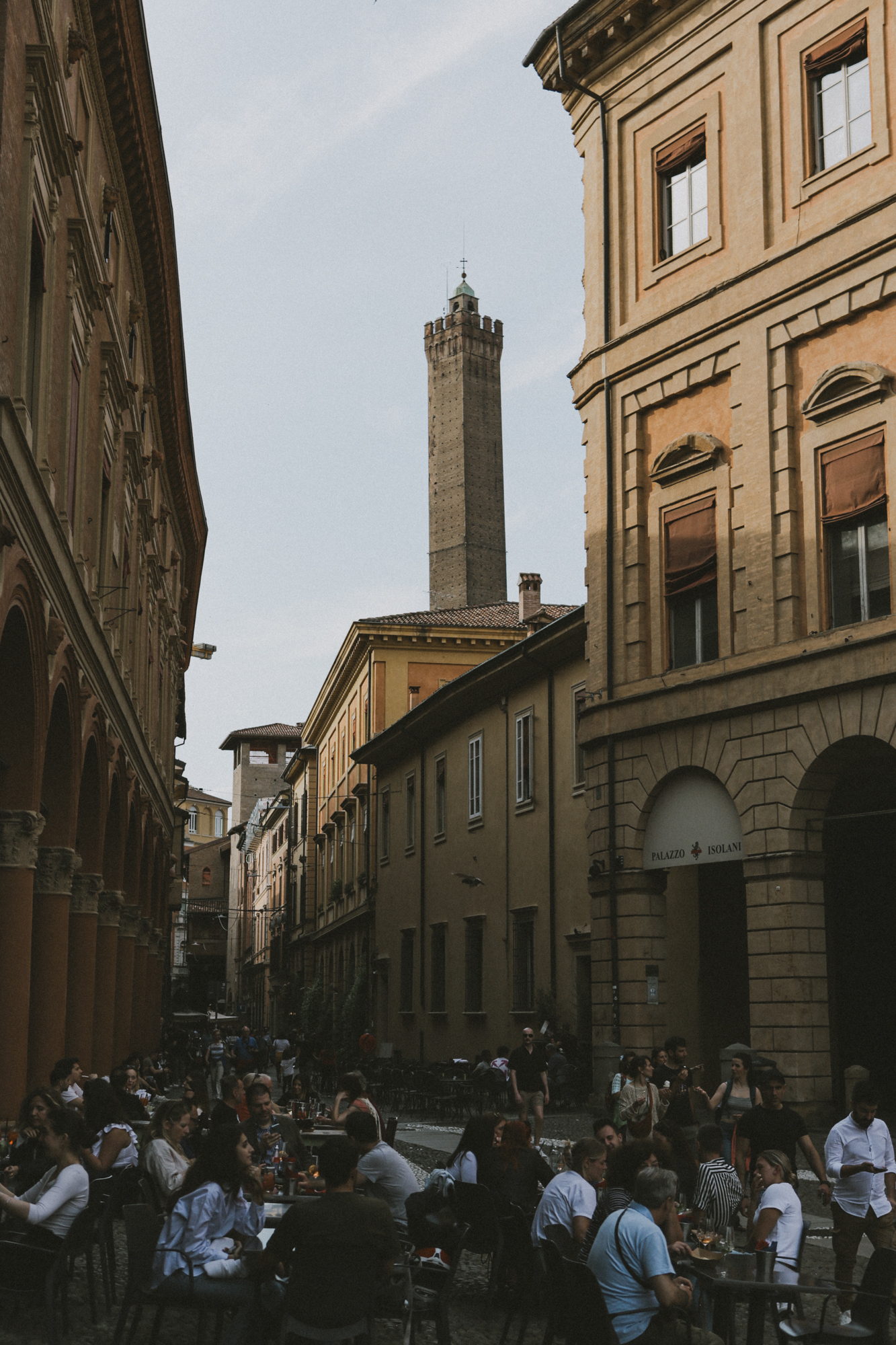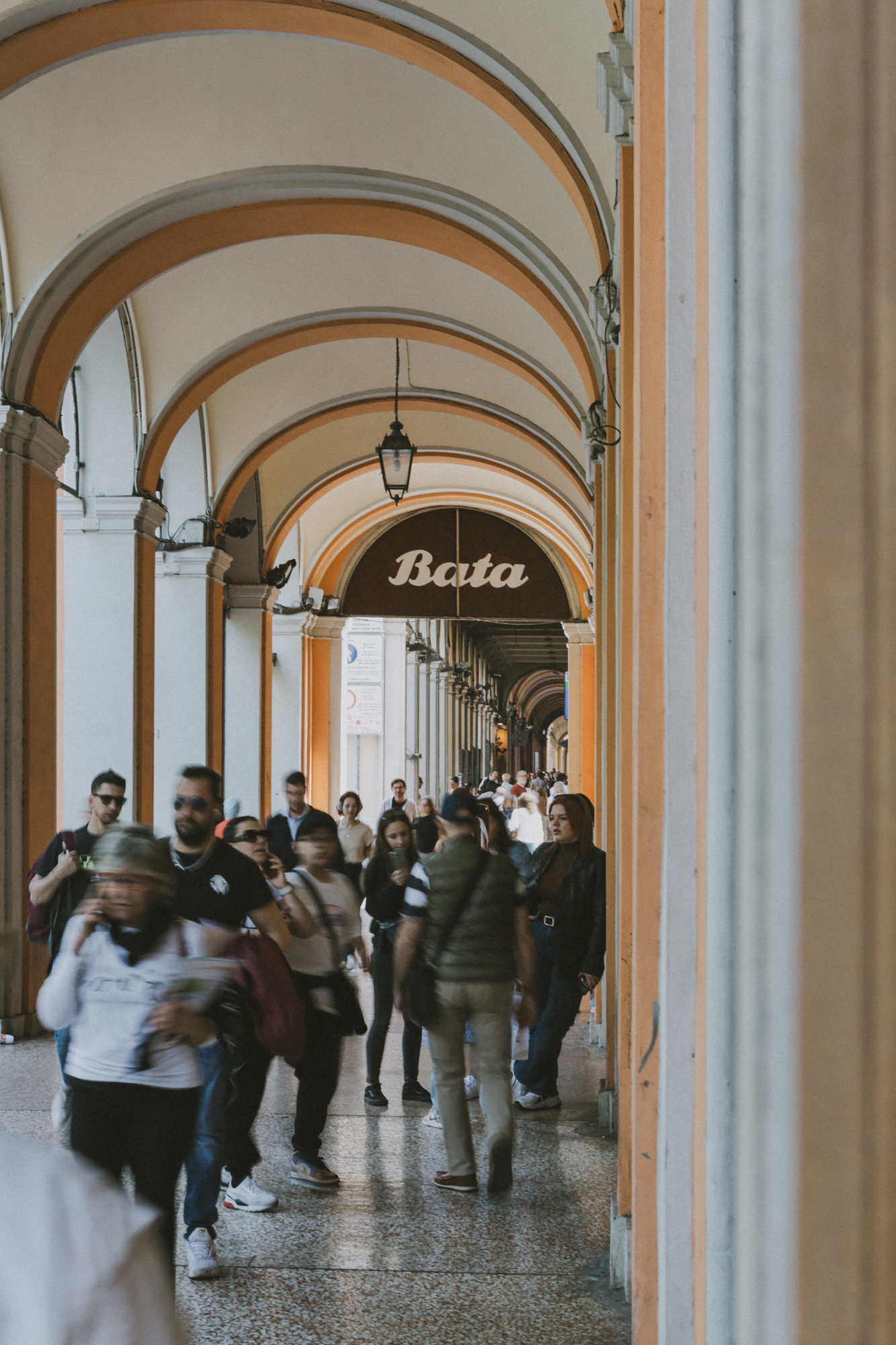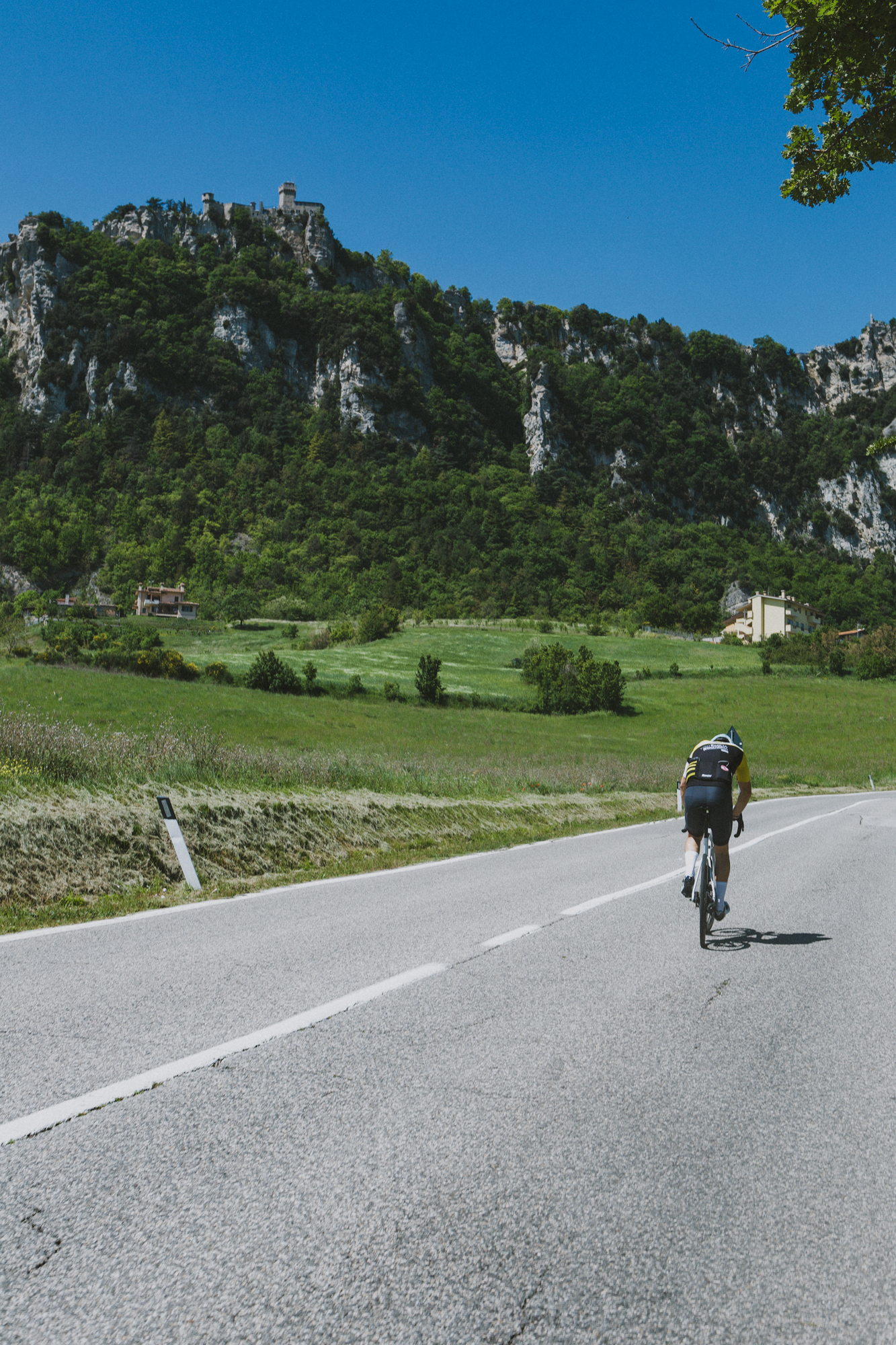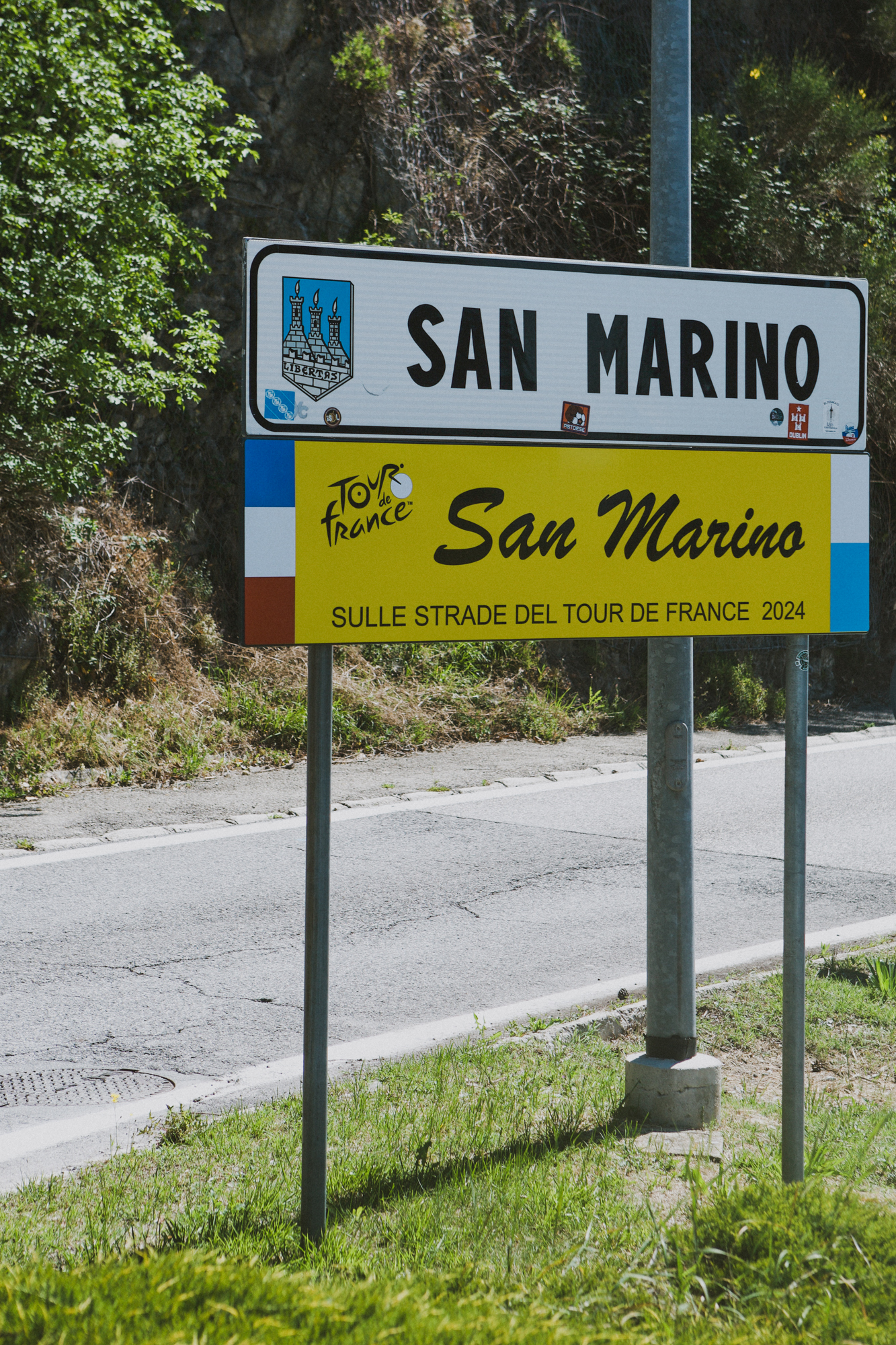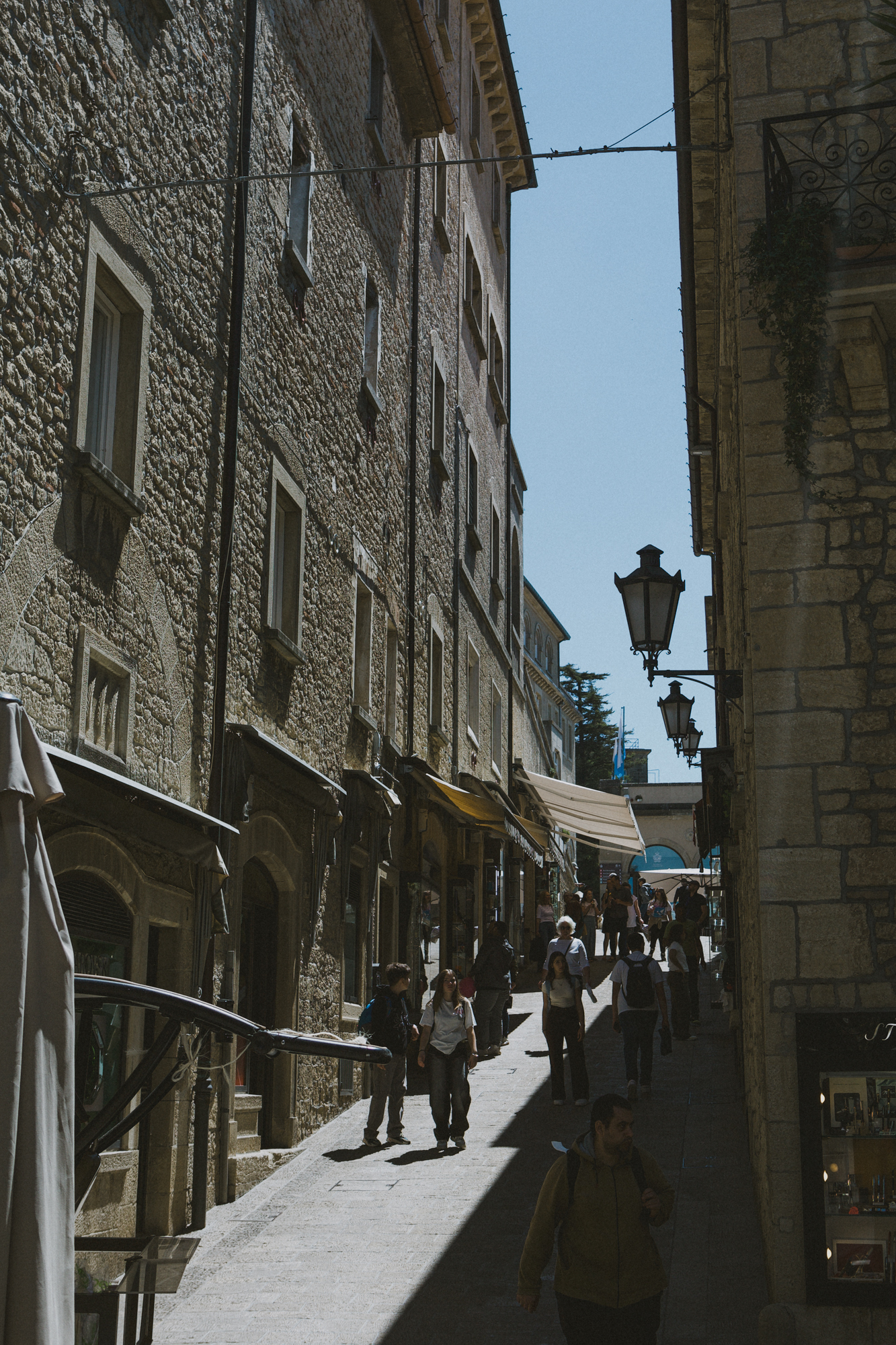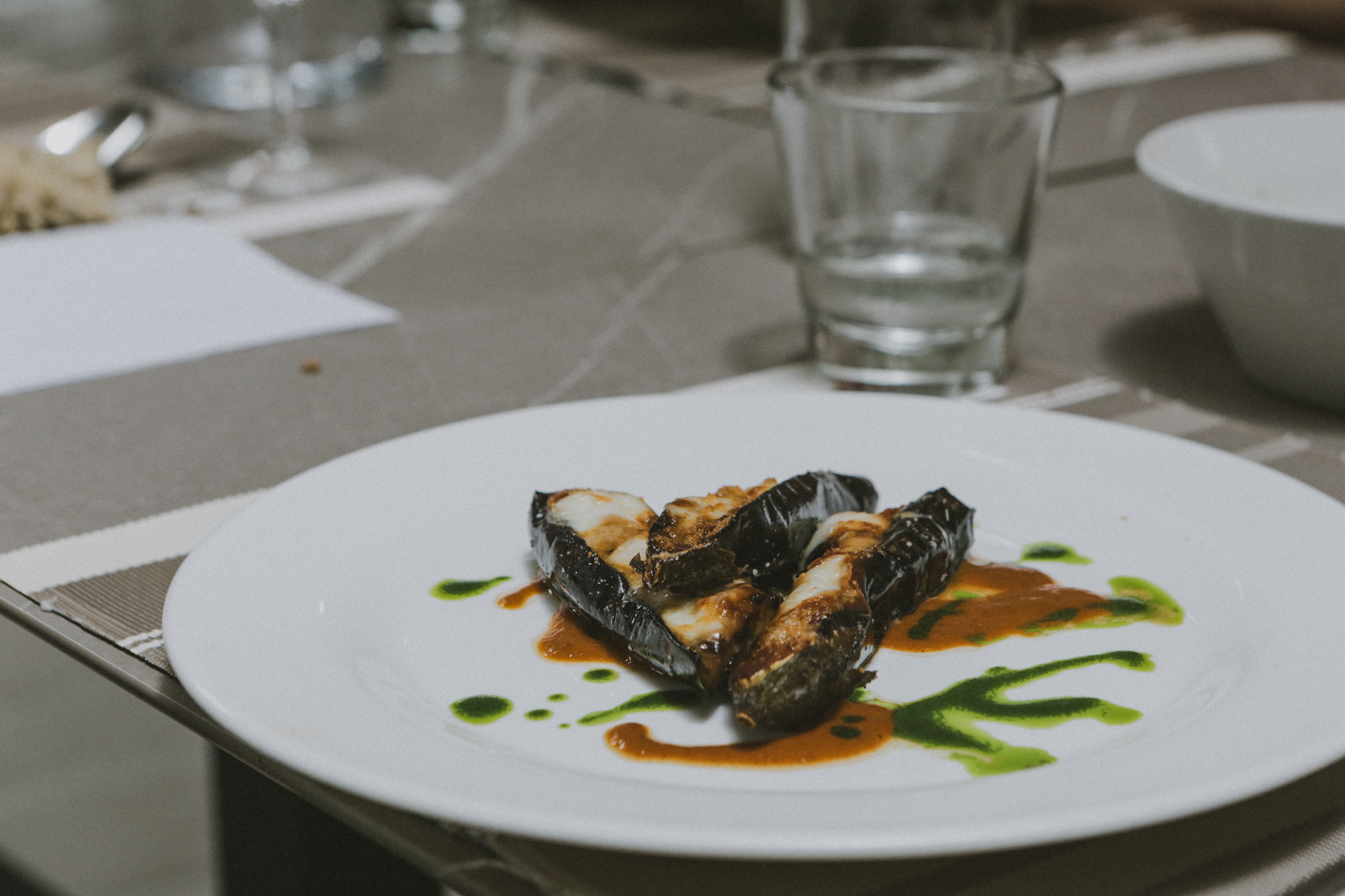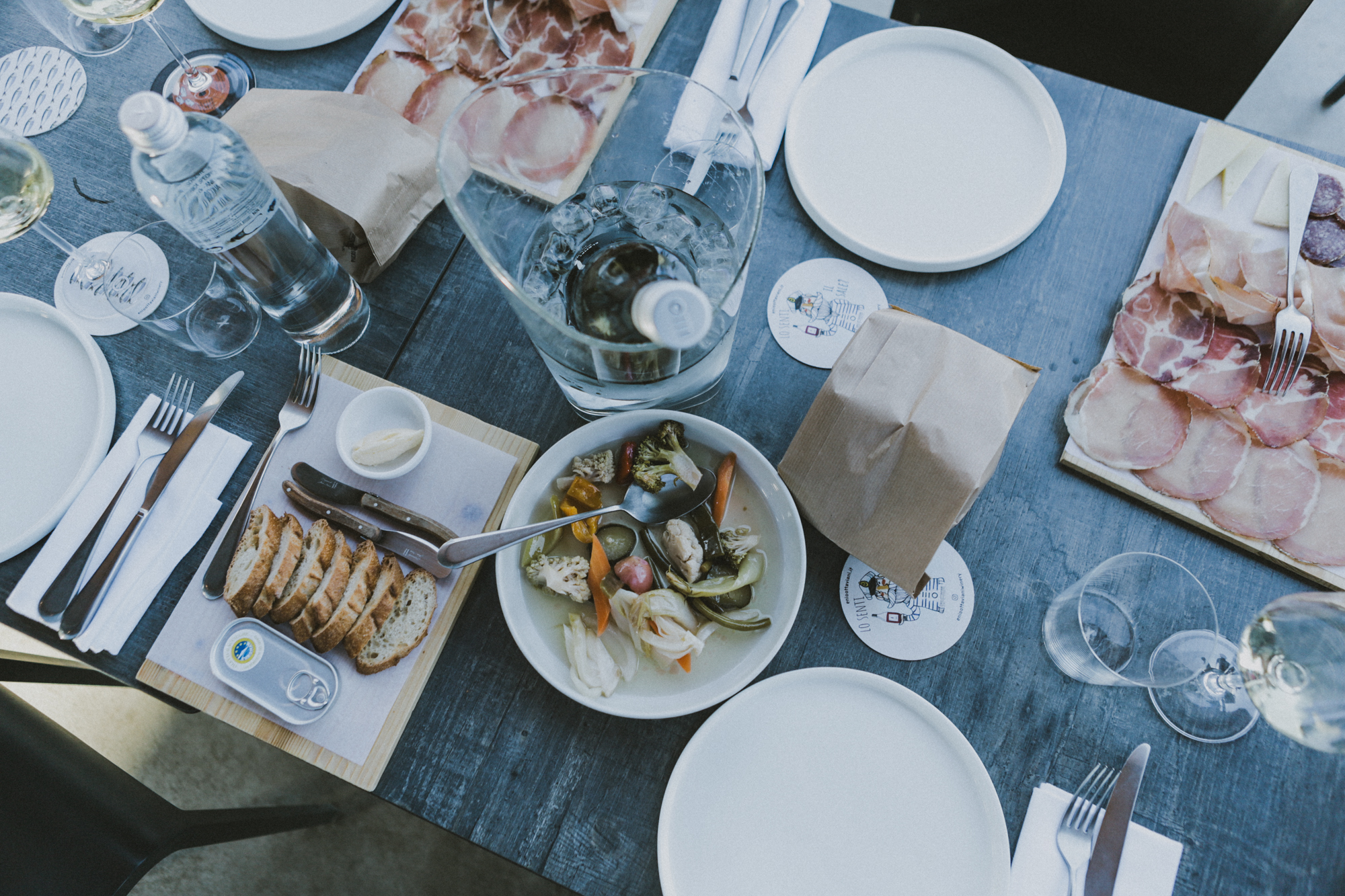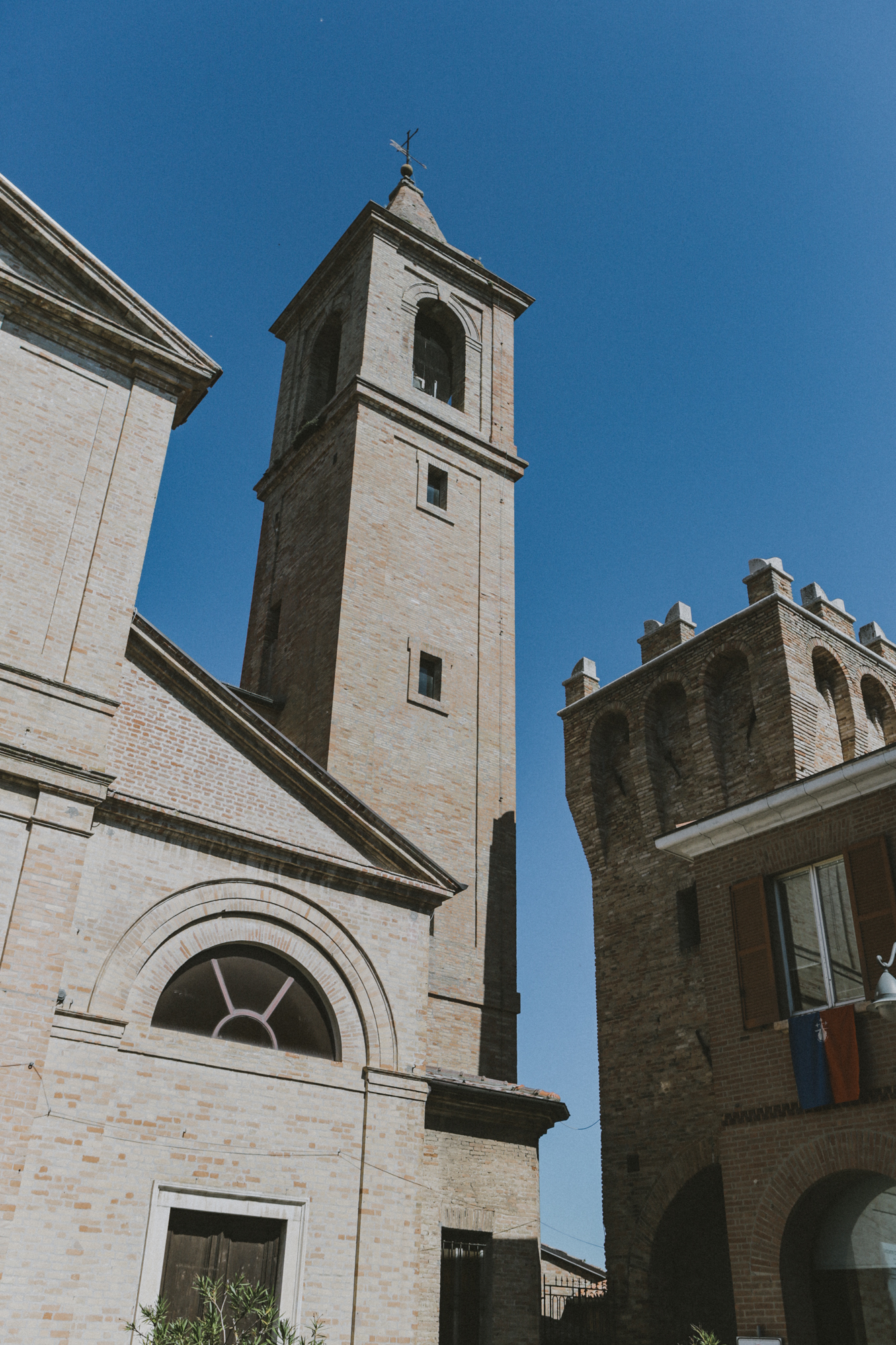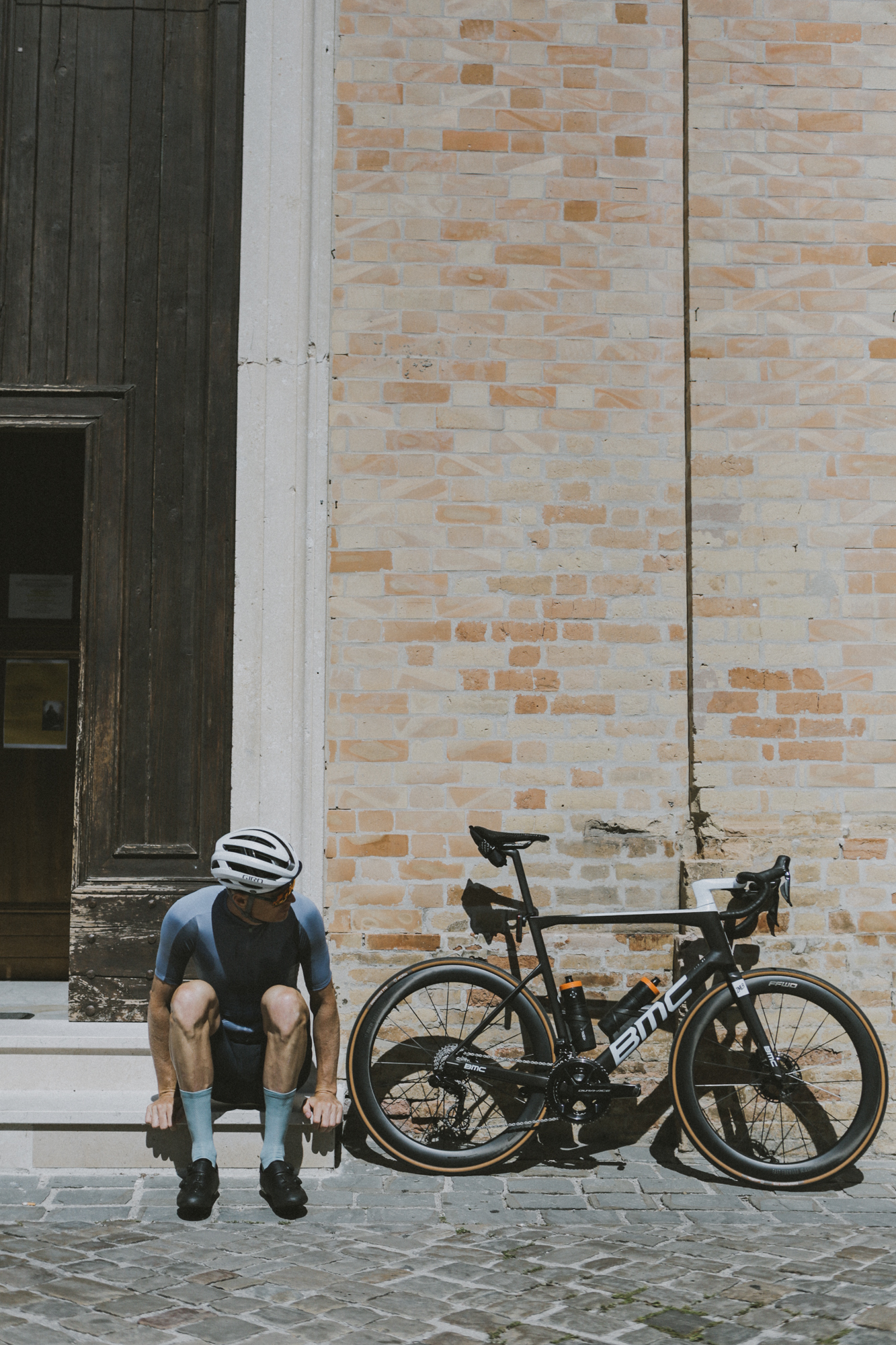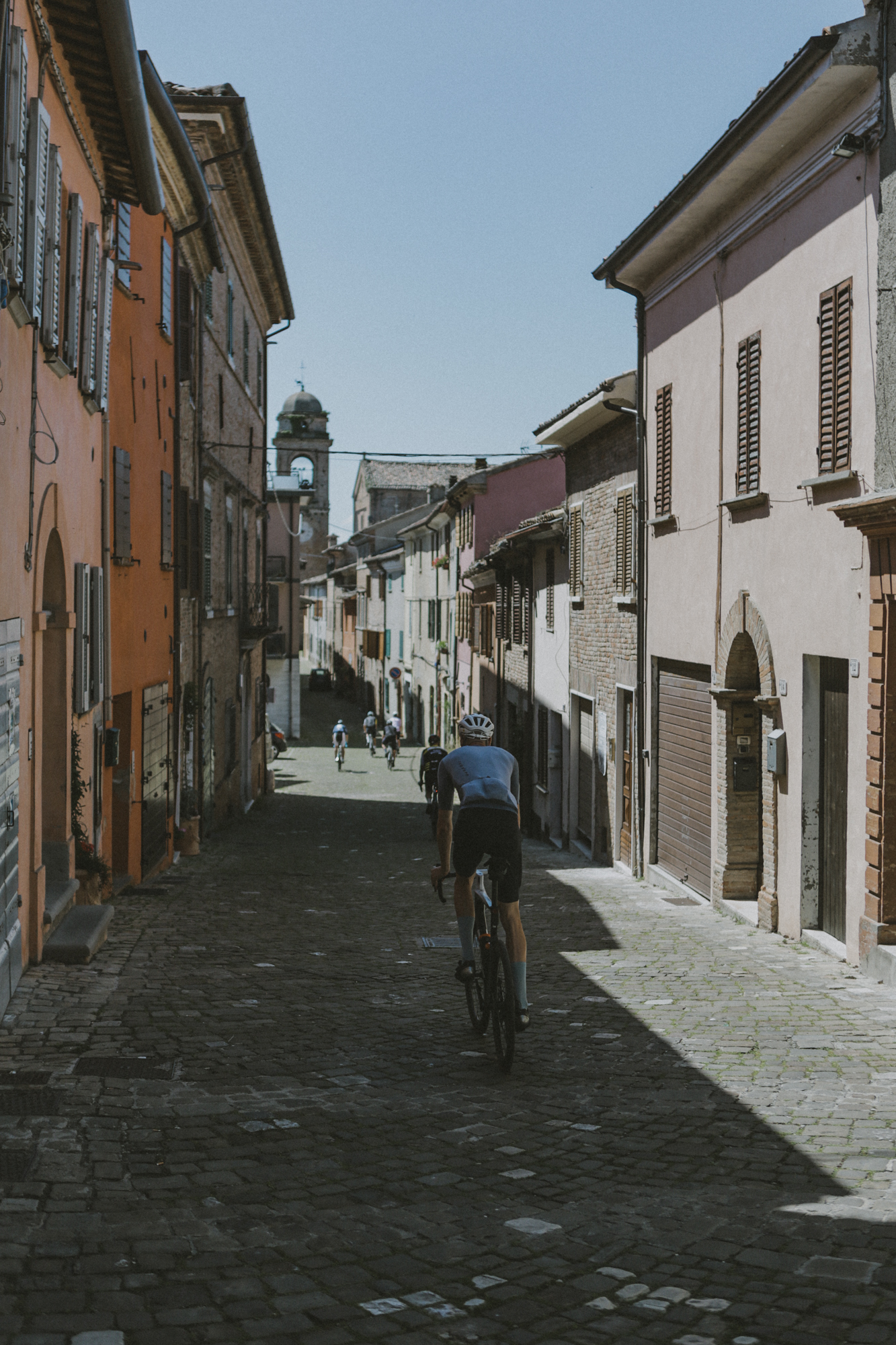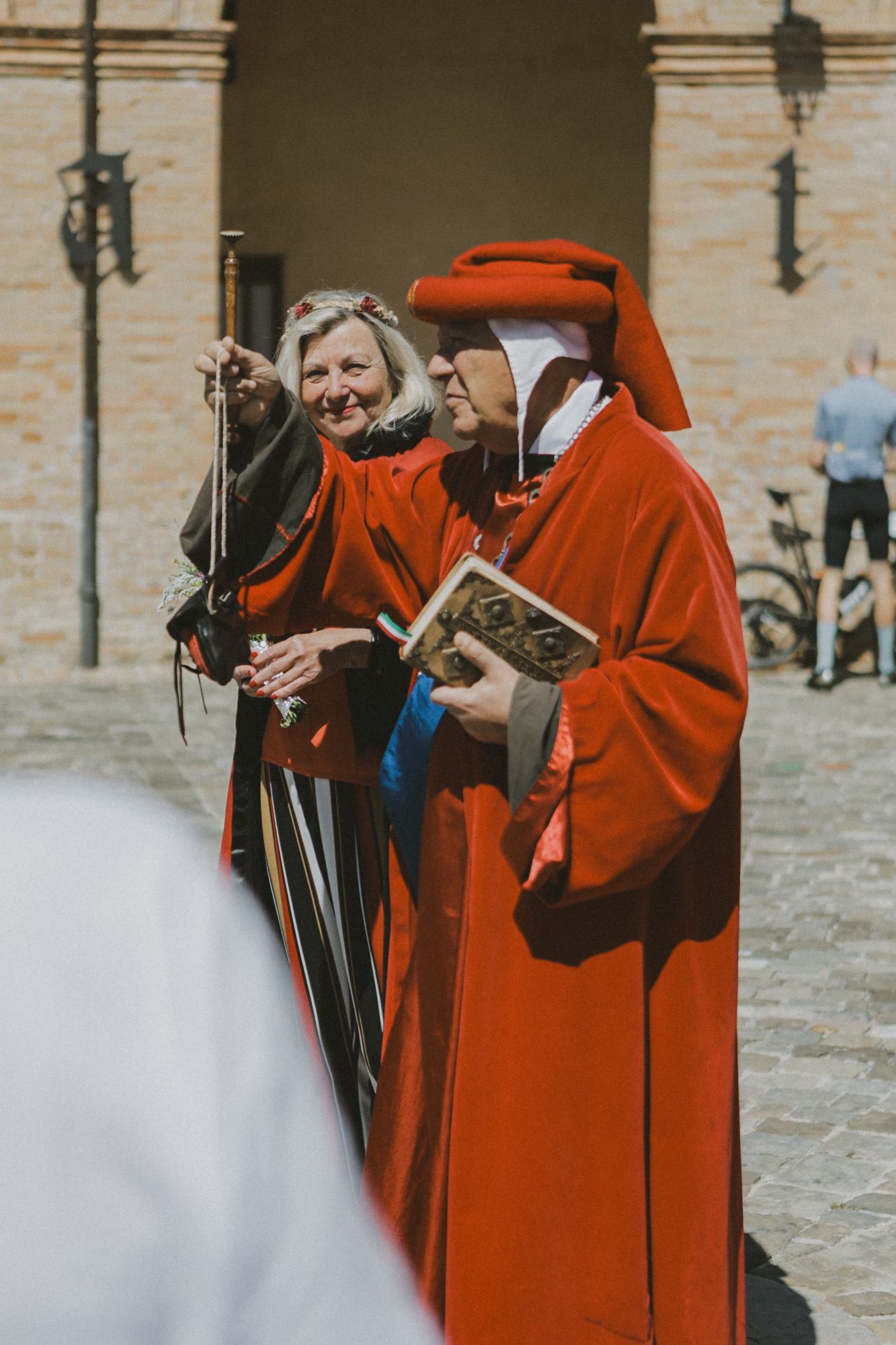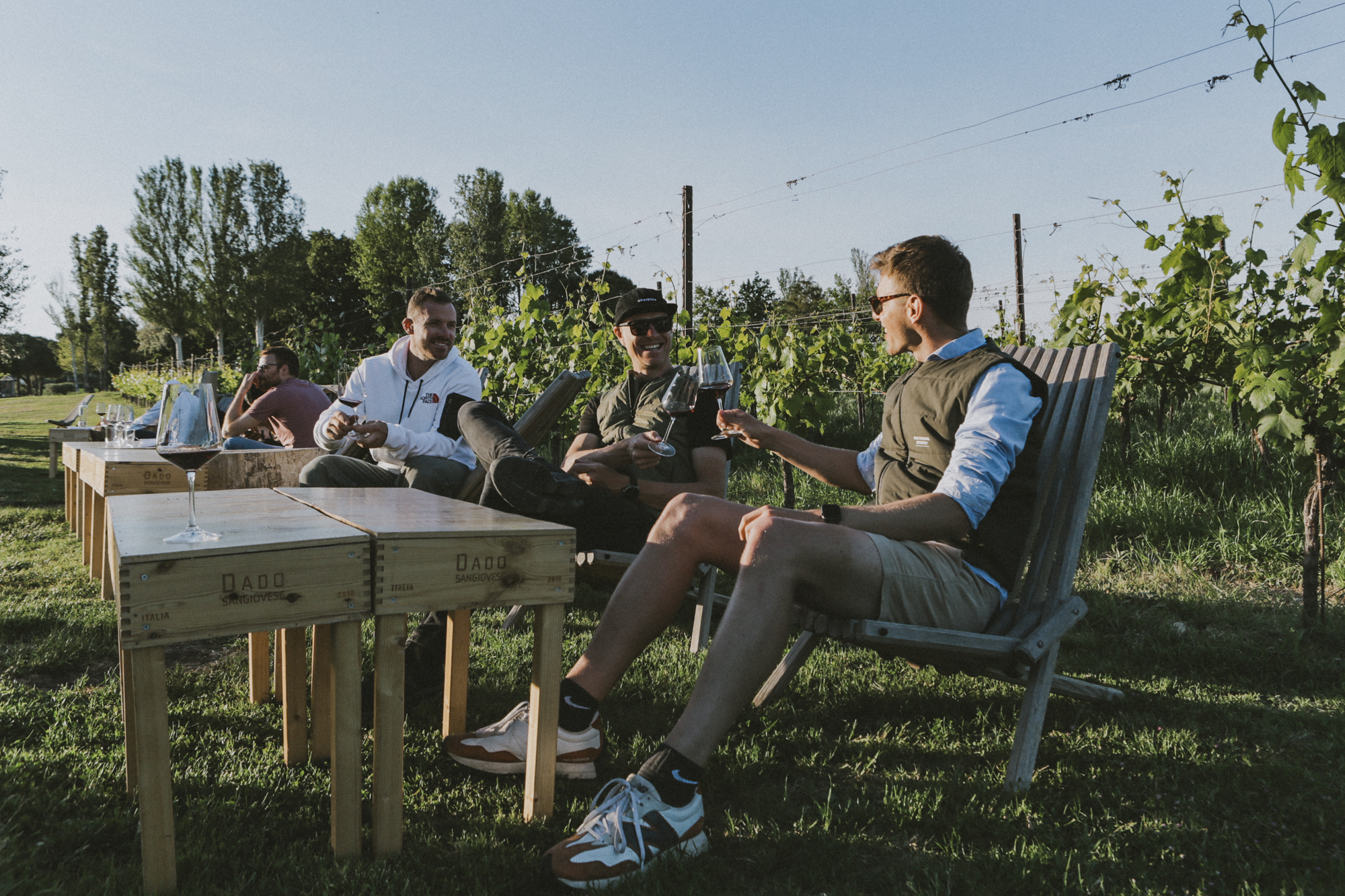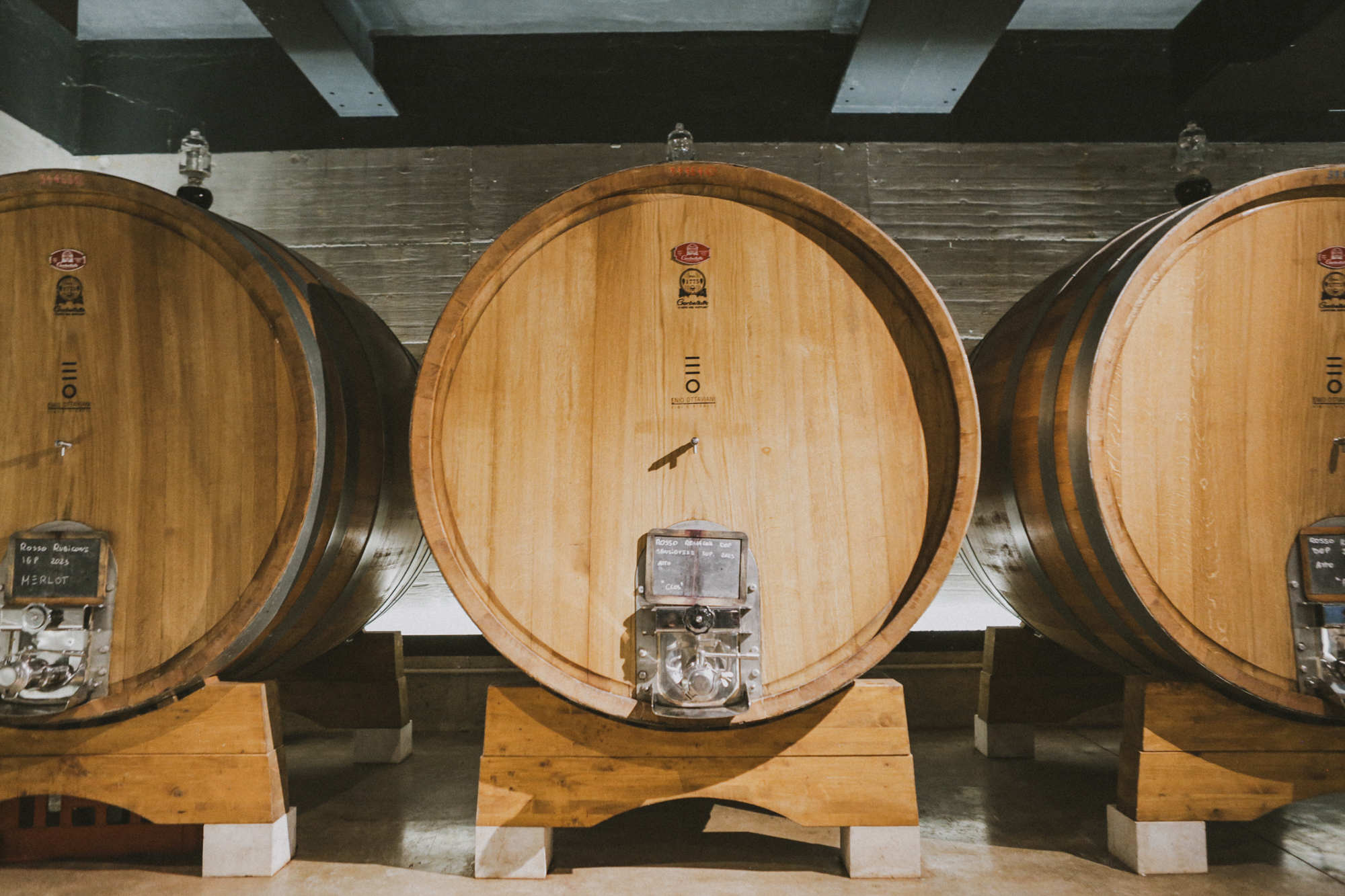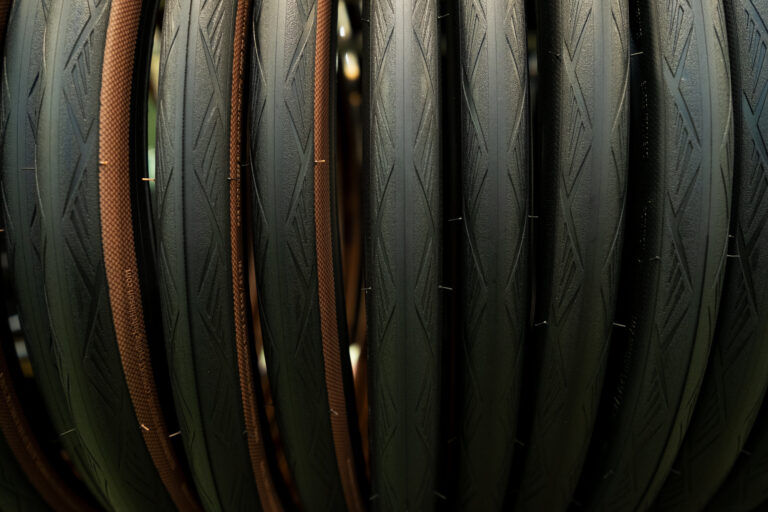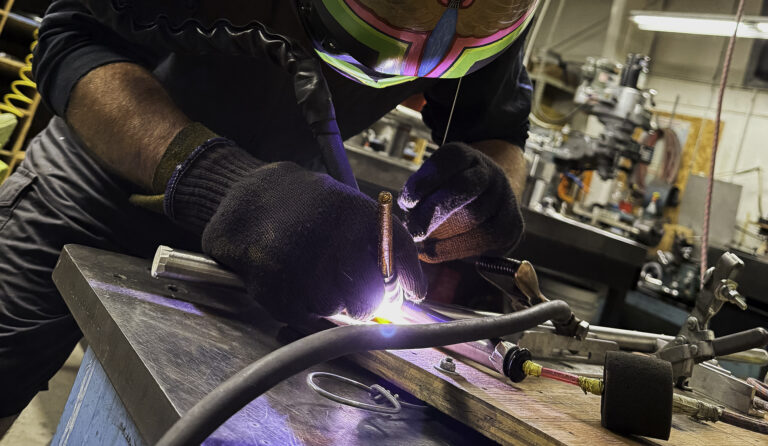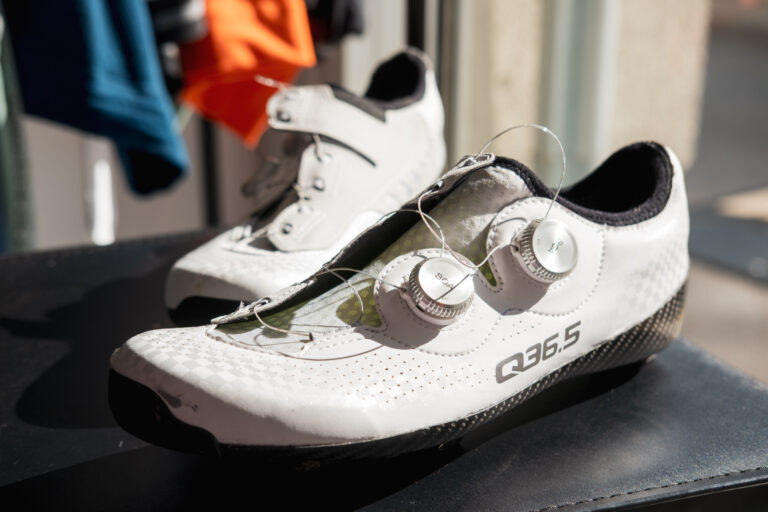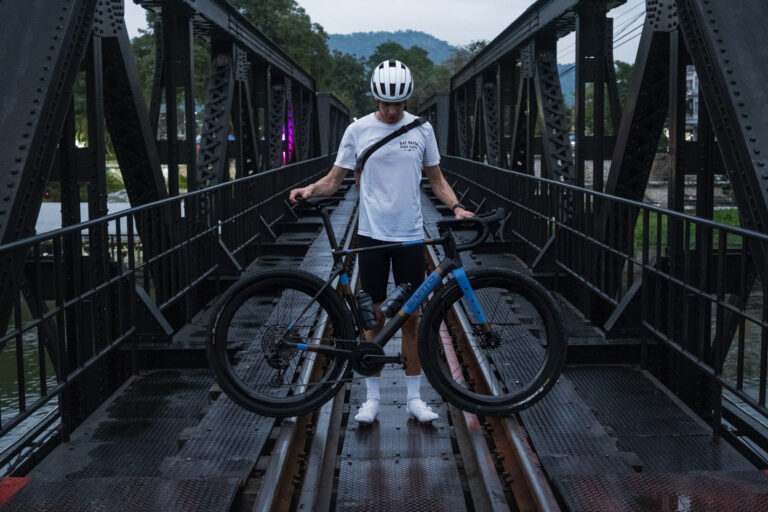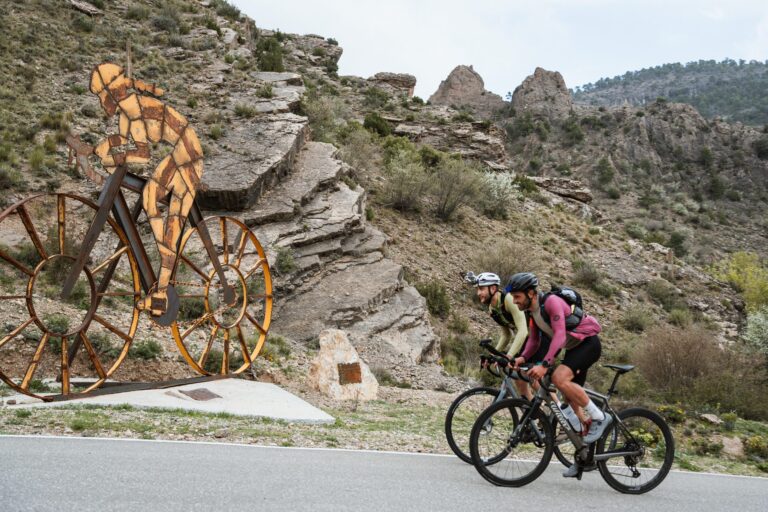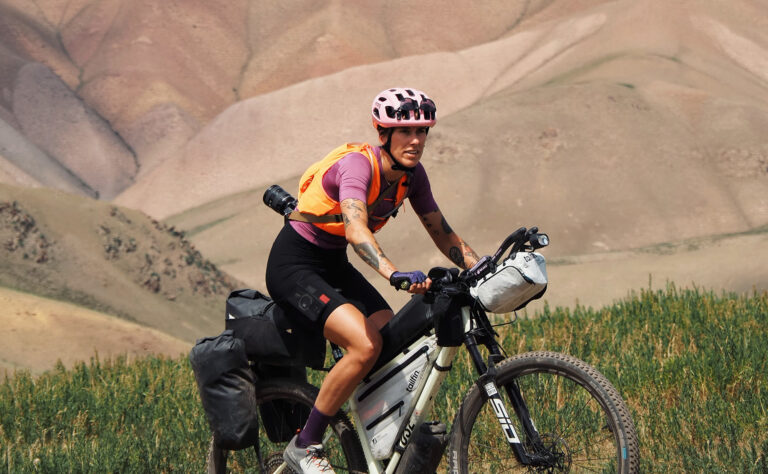Blog
Emilia-Romagna: The Italian region turns pink into yellow
When we think about cycling in Italy, what comes to mind is probably either the Dolomites, which delight us every year when watching the Giro on TV, or Tuscany, with Strade Bianche giving a perfect glimpse of what the region in central Italy has to offer.
There is another region that appears to be transitioning towards a more cycling-oriented vacation spot: Emilia Romagna. This year, the prominent summer vacation riviera takes center stage as it hosts the Grand Départ with the opening three stages. As the curtains drew to a close on the traditionally pink-themed Grand Tour, attention is now shifting to Emilia Romagna, where the vibrant hues of pink now give way to the iconic yellow of the Tour de France.
All local businesses are getting ready for the occasion, and hotels such as the Terrabici group offer cycling-adapted experiences with bicycles and guides at disposal. We stayed in one of the group’s hotels – Hotel Europa Monetti, to experience that firsthand and bring you a closer look at the Tour de France, highlighting what this region holds for those exploring it on a bike.
Grand Départ 2024
This is the first time that Italy is hosting the Grand Départ of the Tour de France. Although last year the Tour de France started in Bilbao, Spain, the territory of the Vuelta, it was not a big surprise given that both races are organized by A.S.O.. This is not the case of the Giro d’Italia, which is organized by RCS. It is, therefore, interesting to see the Tour de France heading into Italy and perhaps to see the differences in the style of the race organization and atmosphere. This situation is reminiscent of when the cyclocross World Championships take place in Belgium; the same environment but a different tournament and atmosphere. We certainly have a lot to look forward to.
Stage 1: Florence to Rimini
The Tour is set to start uphill right from the get-go. In fact, the 205 km long stage holds 3.600 meters of climbing, an elevation that hasn’t been climbed before in the opening stage yet. Once the riders conquer six climbs of Emilia-Romagna, the route then passes through San Marino, where the ultimate climb up to the city awaits them. From there on, the stage steadily descends all the way to the coast and finishes in Rimini.
Stage 2: Cesenatico to Bologna
Starting in the port town of Cesenatico, the home and the resting place of Marco Pantani, the Tour symbolically pays tribute to the Il Pirata with its passage. Pantani is the last rider to manage the Giro–Tour double, and Tadej Pogačar will have his eyes on the same prize.
Following the tough opening day, the race will return to a rather flat profile, typical for the opening stages. The race will pass through the Imola Circuit, a well-known F1 racetrack. Four rolling hills before the flat finish in Bologna could however mix up things for the sprinters and create an interesting classics-like finish suited for punchers. Finishing in Bologna, known not only for its famous sauce, but also for the world’s oldest university or the charming architecture of porticoes spanning the streets of the city center, it is a place worth visiting.
Stage 3: Piacenza to Turin
If the second stage rolling hills shake off the sprinters, the third stage is finally a prime opportunity for them to shine. The peloton will leave the region of Emilia-Romagna behind, heading to Lombardia and then Piémont, finishing in the metropolitan city of Turin, near the foothills of the Alps. That’s where the riders will be heading on the following day, with the Col du Galibier as the first big climb of this Tour.
Additional route suggestions
Route 1: Exploring San Marino
Our hotel was located on the coast in Cattolica. With such a starting point, there are quite straightforward riding options: follow the coast for a flat ride or head inland to reach the hills. On our first day, we embarked to explore San Marino. The route led us through the fields, with a couple of hills here and there, before we started climbing up to the historic city of San Marino. The views gradually opened, with the sea on one side and the mountains rising on the other, separating Emilia-Romagna and Tuscany.
One of the aspects to highlight is the playful terrain. The gradient is constantly changing and all the possible routes in the area feature minor roads with steep climbs or descents.
The region is rich in local food and wine production. We stopped at one of the many agriturismo farms to have lunch and taste their own olive oil and cheese, a nice way of exploring the local culture.
Route 2: Mondaino
A shorter route option that we explored the following day, leaving Cattolica through a flat part, then steadily climbing up to San Giovanni in Marignano, and then to Mondaino, both very picturesque historic villages. The latter one is famous for its Fossa cheese production.
From there, the route takes you through to Tavullia, the hometown of the famous motorcycle racer Valentino Rossi, who even has his museum and store there. One couldn’t but notice that the locals are suitably proud of him, as motorsport is quite popular in Italy, even more with the nearby Misano circuit.
The route finishes at the Strada Panoramica, a road on top of the hilly coastline back to Cattolica, opening nice views of the Adriatic Sea and the rolling hills on the other.
Granfondo Squali Trek
We also had the opportunity to participate in the local Granfondo Squali Trek during our stay in May, which lives up to the fact of how serious Italians are about sportive racing. Around three thousand participants turned up to the start line in Cattolica, most of them ready to go racing hard no matter their age group. We chose to ride the longer route and it led us through a handful of substantial climbs, in total accumulating 2.200m of elevation gain over 125 kilometers. The route opened up several scenic landscape views, with the highlight being the aforementioned Strada Panoramica leading to the end of the Granfondo by the Adriatic coast.
Although Granfondo Squali Trek is a rather newcomer to the Gran Fondo calendar, judging by the joyful participants at the finish, it seems it has already earned its solid spot among the plenty of Italian sportive races.
Emilia-Romagna certainly has a good mix of both the coastal and the hilly landscapes to offer to the visiting cyclists. It may not be as renowned as the neighbouring Tuscany or Lombardia at the moment, but with the attention on the Tour de France, we are curious what effect this will have on the further development and popularity of cycling in this persuading region.

